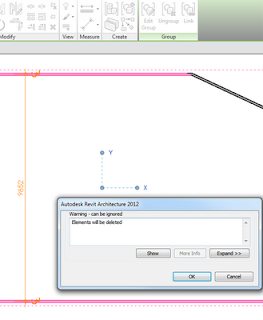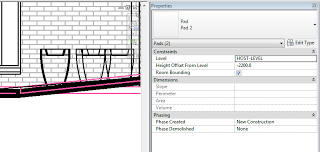Merge the applicable registry settings after downloading them from the page below:
Folder View Settings – Reset All to Default – Windows 7 Forums
You are about to delete a number of model elements, but you are concerned about how many tags and dimensions are going to be affected by this deletion event.
Here is a quick way to check:
- Select the elements you intend to delete
- Click Group, then
- Click Link
- A warning dialog will show up, saying “Elements will be deleted”
- Click Expand, then Export and save a list of the affected elements
- Click Cancel
- Click undo (to undo the Group command)
Now, you can use that list to check check or correct the affected detail items.
You may also be interested in these posts:
Find all instances of a detail object and report them to a file
Quickly review Error Report by parsing Element ID in spreadsheet
Just go to this link, then click Browse, select your PDF file then enter your email address.
You may have to dodge a few ads in the resulting email, but the actual DWG output is fast and the quality is not too bad.
I have posted about extracting useful data from PDFs before:
Obtain Vector Information from PDFs using Free Tools
Or if you want to convert an image to a DWG file:
Converting a raster image to a DWG file
Download the September 2011 issue:
Low Resolution PDF (11.5mb)
High Resolution PDF (33.7mb)
Read it Online
Main page at:
Issues | AUGI
Interesting comment from the Autodesk deployment blog, Up and Ready:
We have been getting a lot of posts in our forums regarding corrupt installations and downloads. My suggestion is to use Firefox and the Browser Download instead of using the Download Manager.
via
Downloading Software: Browser Download vs Download Manager – Up and Ready
I have previously posted about using Firefox and DownThemAll to download Autodesk content.
There are some other great third party download managers available – which one do you use?
Jdownloader is quite unique and powerful – check it out if you haven’t before. From the website:
It simplifies downloading files from One-Click-Hosters like Rapidshare.com or Megaupload.com – not only for users with a premium account but also for users who don’t pay. It offers downloading in multiple parallel streams, captcha recognition, automated file extraction, and much more. Of course, JDownloader is absolutely free of charge.
Another option to add to the Parallels / Bootcamp debate:
- Install the Remote Desktop Client on your Mac
- Log into a PC that has Revit installed
- Use Revit
Download link:
Microsoft Remote Desktop Connection Client for Mac 2.1.1
When running the deployment under a system account, the deployment appears to complete successfully. Revit appears to run normally, however, some of the user data is misdirected and supporting folders like the Journals folder are not created under <%LocalAppData%AutodeskRevitAutodesk Revit Architecture 2012>. Journal files are then written to C:temp instead.
Read the rest at
Revit 2012: SCCM deployments and the Identity.ini file – Up and Ready
To kill the Communication Center … in Regedit replace all the (1) with (0) see image.
(you will need to login to Revit Forum)
Then rename WSCommCntr2.exe to AAWSCommCntr2.exe
( C:Program FilesCommon FilesAutodesk SharedWSCommCntrlibAAWSCommCntr2.exe)
via this post
New AUBench (archive) – Page 22
Obviously, you may need to change the Registry location depending on what version of Revit you are using…
If you don’t want to manually edit the Registry, you can use the CAD Manager Control utility as per this post:
Revit 2011 closes right after the splash screen – Autodesk Discussion Groups
If you are having Communication Center issues, it may be due to a corrupted XML file. Refer to this Revit support page:
Revit 2010 products hang at or before splash screen
This AutoCAD support page is along similar lines:
How to disable the Communication Center in Autocad?
Many of you already know how to export a combination of differently styled images from Revit and then combine them in Photoshop to create something really interesting.
If you aren’t aware of this technique, check out:
Shades of Grey: IMAGE MANIPULATION
You know when you have two pads meeting at a common edge, and then Revit for some reason shows this tiny sliver of created topography between them?
Try this:
- Set the two Pads to have the same ‘Level’ and ‘Height Offset from Level’ property values
- If you need to use slope arrows, you should still be able to get them to work upwards or downwards from this particular level
This tip worked for me – I hope it helps you. I’m pretty sure that there are still situations where things still just won’t quite work…but for the time being, Revit Wants you to set adjacent Pad levels at the same value.
Tip via this thread
Pads Pads Pads…oh and there’s a problem – AUGI






